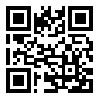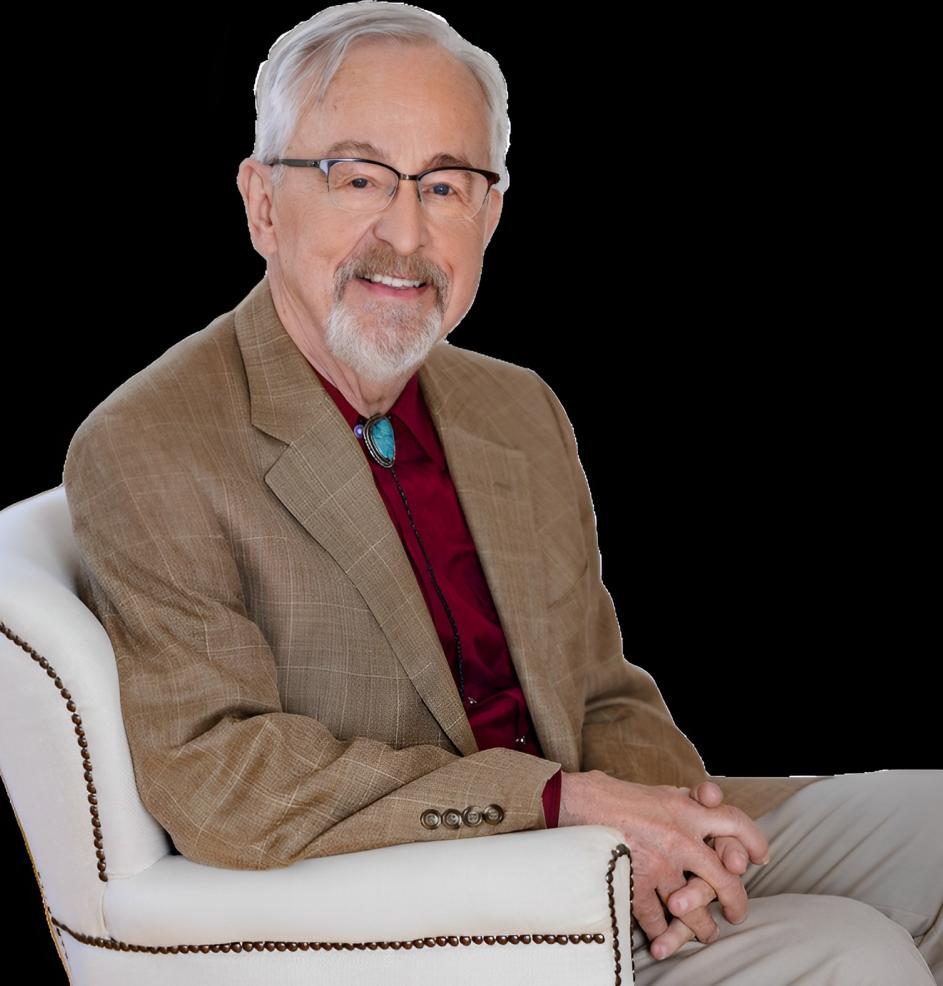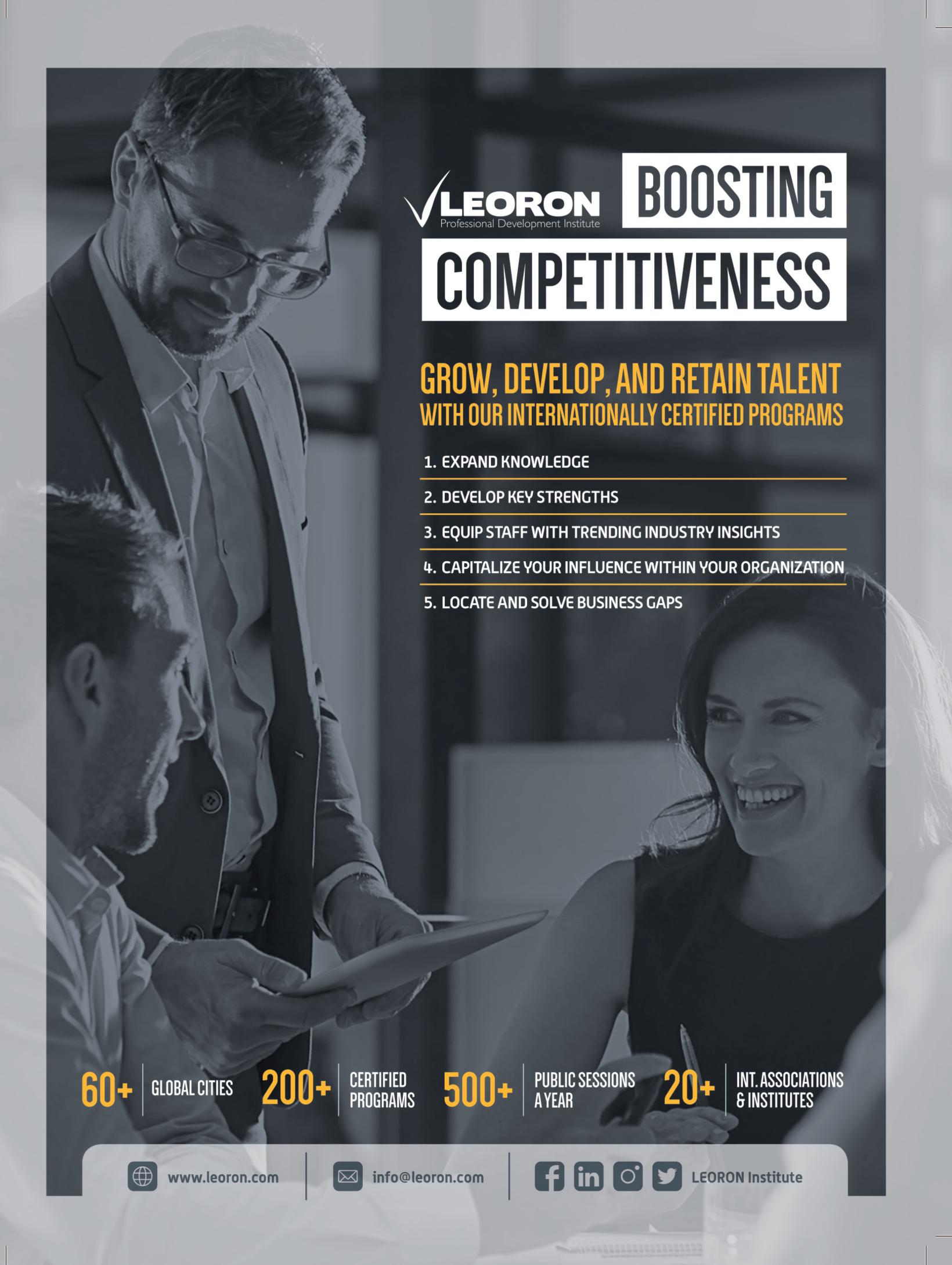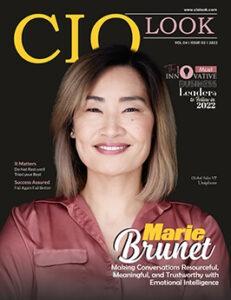Evidence to Excellence Empowering Students with Teaching Innova�on
Academic Moderniza�on Why Are EdTech Visionaries Important for Learning?










Evidence to Excellence Empowering Students with Teaching Innova�on
Academic Moderniza�on Why Are EdTech Visionaries Important for Learning?









Inthisspecialedition,weshineaspotlightona
pioneerwhosevisionandleadershipcontinueto redefinethelandscapeofeducationandtechnology RichardLarson,oftenhailedasafoundationalforcein EdTech,hasspentdecadesattheintersectionofinnovation andinstructionwheredigitaltoolsdon'tjustsupport learning,buttransformit.
Larson’sworkprovesthateducationisnolongerconfined totheclassroom.Fromintelligenttutoringsystemsto advancedlearninganalytics,hisresearchandleadershipat MIThaveinfluencedhowinstitutions,educators,and studentsembracetechnologytocreatemorepersonalized, accessible,andeffectivelearningenvironments.His journeyisnotonlyoneofintellectualpursuitbutofsocial impact—ensuringthatlearninginnovationsreach underservedcommunitiesandbridgeeducationaldivides.
ThisCIOLookedition, Tech Meets Teaching,delvesinto Larson’sgroundbreakingcontributions,hisleadershipat MITIDSS,andhisunwaveringcommitmenttolifelong learning.Asyouturnthepages,you'lluncoverinsights thatchallengetraditionaleducationalmodelsandinspire newdirectionsinpedagogy
WeinviteyoutoexplorehowvisionarieslikeRichard Larsonarenotjustimaginingthefutureoflearning—but activelybuildingit.Letthisserveasareminderthatwhen technologymeetspurpose,andinnovationmeetsempathy, theoutcomescanbetrulytransformative.
Happy Reading!



C O N T E N T S
PoojaMBansal Editor-in-Chief
CONTENT
Deputy Editor Anish Miller
Managing Editor Prince Bolton
DESIGN
Visualizer Dave Bates
Art & Design Director Davis Mar�n
Associate Designer Jameson Carl
SALES
Senior Sales Manager Wilson T., Hunter D.
Customer Success Manager Collins J.
Sales Execu�ves Tim, Smith
TECHNICAL
Technical Head Peter Hayden
Technical Consultant Victor Collins
SME-SMO
Research Analyst Eric Smith
SEO Execu�ve Alen Spencer

FOLLOWUSON www facebook.com/ciolook www.twi�er.com/ciolook

WE ARE ALSO AVAILABLE ON
Email info@ciolook com For Subscrip�on www.ciolookmedia.com CONTACTUSON
Copyright © 2025 CIOLOOK, All rights reserved. The content and images used in this magazine should not be reproduced or transmi�ed in any form or by any means, electronic, mechanical, photocopying, recording or otherwise, without prior permission from CIOLOOK. Reprint rights remain solely with CIOLOOK.
July,2025




Education is not merely a path to a career—it is the
very foundation on which empowered societies are built.Acrossgenerations,thepowerofeducationhas transformed lives, bridged social divides, and illuminated futures.Yet behind every transformative educational system lies the vision of those who dedicate themselves wholly to nurturing minds and expanding human understanding. One such beacon in the world of education is Professor Richard Larson.
AsanesteemedprofessoratMITandapassionateadvocateof operations research, Dr Richard Larson has shaped how educationistaught,delivered,andperceivedoverthelastfive decades.Frompioneeringresearchtonurturingtheintellects ofcountlessstudents,hisjourneyisnotjustoneofacademic milestonesbutoneofhumanimpact.Hisstoryexemplifiesthe idea that true educators are not just teachers—they are architectsoffuturesocieties.
Inthefollowingexploration,wetraceDr Larson’slife—from hisearlyyearsinNewYorkandhisintellectualgrowthatMIT to his transformative work in education and global mentorship His insights into learning, research, and leadership not only enrich the past and present of education butalsoilluminateitsfuture.Letusdiscoverhowoneman’s dedication has inspired generations of learners, innovators, andthinkers.

“As an esteemed professor at MIT and a passionate advocate of operations research, Dr. Richard Larson has shaped how education is taught, delivered, and perceived over the last five decades ”
According to Dr Richard Larson, education stands as the most powerful and enduring gift that society can offer to an individual In his words, “It is a breathtaking ladder upwards—onceacquired,noonecantakeitawayfromyou.” Education, he believes, is a fundamental necessity that bridges the divide between privilege and poverty, empoweringpeopletolivehealthierandmorefulfilledlives. More than just degrees or grades, education fuels dreams, builds character, and empowers both personal growth and socialchange.
Larsonhasalwaysemphasizedthatthegoalofeducationmust go beyond textbooks. It must encourage critical thinking, empathy, and curiosity. In his long tenure, he has seen educationchangelives,particularlywhenstudentsreceivethe rightmentorshipandguidance.Itisthispassionfornurturing potential that has shaped his five-decade-long academic journey
Born in Bayside, Queens, in 1943, Richard Larson spent his early childhood in Pennsylvania before settling in North Plainfield, New Jersey. His formative years were characterizedbyanaturalcuriosityabouttheworldandalove forthesciences.AtNeedhamHighSchoolinMassachusetts, hedevelopedafondnessforphysics—aninterestthatwould sethimonthepathtoadistinguishedacademicfuture.
Despitehisnaturaltalent,Larsonrecallsbeingstunnedwhen he received an acceptance letter from the prestigious Massachusetts Institute of Technology (MIT). Like many others suffering from the "Groucho Marx Syndrome," he initially thought it was a mistake. But it was real—and so began a lifelong association with an institution that would definehiscareer
Dr. Larson completed his Bachelor’s, Master’s, and PhD in ElectricalEngineeringfromMIT Buthewasneveronetobe confined by the rigid boundaries of academic disciplines. From the very start, he viewed his professional journey as a bridgeconnectingdiversesilosofknowledge.Hechosenotto becomeatraditionalphysicistbecausehedidnotwanttobe limited by narrow career tracks. Instead, he wanted to move fluidly between research, teaching, and real-world problemsolving.




His multidisciplinary interests allowed him to work across variousdepartments,includingElectricalEngineering,Urban Studies, and MIT’s Institute for Data, Systems, and Society (IDSS). His approach was revolutionary—he showed that collaboration between disciplines could generate deeper, morepracticalinsightsintotheworld'smostpressingissues.
Dr.RichardLarson’sroleasaprofessorwasnotjustajob;it was his calling. Over his 55-year-long teaching career, he touchedthelivesofthousandsofstudents.Whatsethimapart was his genuine investment in each student’s journey He recalls moments when students came to his office, on the verge of quitting due to poor grades or lack of confidence. Through patient guidance and personal encouragement, he helpedtransformself-doubtintosuccess.
His teaching philosophy revolved around engagement. He strivedtomakelearninginteractive,relevant,andenjoyable. Teaching Operations Research (OR), for instance, was not aboutabstractconceptsbutaboutshowingstudentshowOR applied to airline scheduling, healthcare logistics, or even pandemic response strategies. “OR is the most important invisible profession,” Larson often says—because its tools touchvirtuallyeverysectorofmodernlife.
Beyond the classroom, Larson assumed several leadership positions. He served as President of the Operations Research Society of America (ORSA) in 1993-94 and later as President of INFORMS,theInstituteforOperationsResearch and the Management Sciences These roles enabledhimtoinfluencethefield’sdevelopment at a global level, advocating for data-driven decision-making in policy, education, and business.
Healsoco-directedMIT’sOperations Research Center for over 15 years, shaping its research agenda and mentoring graduate students who wouldgoontomaketheirownmarks in academia, government, and industry. Perhaps one of his most notable roles was as principal investigatoroftheMIT

“Dr. Richard Larson’s role as a professor was not just a job; it was his calling. Over his 55year-long teaching career, he touched the lives of thousands of students.”



BLOSSOMSInitiative—aprojectdedicatedtobringinghighquality STEM education to underserved schools around the worldviavideolessons.

“Dr. Larson’s early work “Urban Police Patrol Analysis” (1972) earned him the prestigious Lanchester Award.”
Dr Larson’s scholarly output is impressive: he is the coauthor or editor of six books and has written over 175 scientificpapers.Hisresearchspanstopicsasdiverseasurban policing,queuingtheory,smartenergyhomes,andpandemic modeling Notably, his work on vaccine distribution strategies during the H1N1 crisis—done with student Anna Teytelman—won him the “Best Paper of theYear” award in 2012fromValueinHealth
In 2015, his work earned him the prestigious Lawrence M. KleinAward from the U.S. Department of Labor. His paper "STEM Crisis or STEM Surplus?" written with Yi Xue, sparkednationalconversationandwasfeaturedinTheNew



“Professor Richard Larson’s career offers a powerful lesson in the value of passion, perseverance, and purpose. ”
York Times. His contributions consistently demonstrate the real-world relevance of academic research when driven by curiosity,rigor,andcompassion.
ProfessorLarsondefinesavisionaryleaderassomeonewho teachesnotjustsubjectsbutmindsets.Forhim,trueeducation cultivates inquisitive, ethical, and responsible citizens. He encourages students to ask hard questions, challenge the statusquo,andresistfollowingthecrowdblindly.Visionary leaders, he says, often tread risky but meaningful paths that otherslaterfollow
This commitment to nurturing independent thinkers makes his teaching approach profoundly impactful. It isn’t about creatingfollowers—it’saboutbuildingleaders.
Richard Larson hopes to be remembered not merely for his academic accomplishments but for his relationships with students and colleagues. His joy comes not from accolades, but from knowing that his students have gone on to achieve great things in academia, policy, and the private sector. To him,thesesuccessesrepresenttherippleeffectofmentorship.
HeseeshimselfassomeonewhohelpedredefineOperations Research, contributed to education reform, and most importantly—addedvaluetoeveryinstitutionandindividual heengagedwith.
Dr Larson’s early work “Urban Police Patrol Analysis” (1972) earned him the prestigious Lanchester Award. Over the years, he has received multiple best-paper awards for tackling issues of national importance from pandemic response to STEM workforce trends These accolades underscoreacareermarkednotonlybyacademicexcellence butbysocietalimpact.
Despite the changing landscape of education, Larson has never compromised on the core of his teaching philosophy: engagement. Whether teaching in person or through digital platforms, he believes that education must always stimulate curiosityandfosterdialogue.Forhim,everylectureisatwowayconversation.
Whether it's helping a struggling student become a top performer or making abstract math relatable through realworld scenarios, his ability to connect knowledge with applicationremainstimeless.
ProfessorRichardLarson’scareeroffersapowerfullessonin the value of passion, perseverance, and purpose. In a world often obsessed with short-term gains, he reminds us that the truemeasureofsuccessliesintheliveswetouchandtheideas weinspire.
Throughresearch,mentorship,andleadership,hehashelped redefine what it means to be an educator in the 21st century He is not just a professor, writer, or researcher—he is a changemaker,avisionary,andaboveall,alifelongstudentof thehumanpotential.
As the world continues to evolve, the legacy of Richard Larsonwillremainetchedintheheartsandmindsofthosehe taught, mentored, and inspired. In doing so, he has not only shapedthefutureofeducationbuthasalsoremindeduswhy learning—and those who enable it—remain the cornerstone ofallprogress.
In today’s fast-paced digital age, education is evolving rapidly,drivenbytechnologicalinnovationandshifting societal needs. Behind this transformation are individuals who see beyond the immediate challenges of teachingandlearning—theEdTechvisionaries.
These pioneers are not just adopting new tools; they are reimagining how we learn, teach, and grow in an interconnectedworld.Theirimportancecannotbeoverstated, as they hold the potential to reshape the very foundation of globaleducation.
Gone are the days when learning was confined to the four wallsofaclassroom.ThankstoEdTechvisionaries,education now extends beyond geographical and socioeconomic barriers.Whetherit's a student in a remote village accessing quality lectures or a teacher in a bustling city employing interactive simulations, these changes stem from forwardthinkingleaderswhopushboundaries.
By envisioning immersive, student-centric, and adaptive learning environments, these innovators have brought technologies likeArtificial Intelligence,Augmented Reality, and gamification into the hands of educators This reimagining doesn’t just enhance engagement—it fosters personalized learning paths that cater to individual student needs,somethingtraditionaleducationstruggledtoachieve.
One of the most significant contributions of EdTech visionaries is their relentless pursuit of educational equity Millions of children worldwide still lack access to quality learning.VisionaryleadersinEdTecharedesigningscalable andaffordablesolutionstobridgethisgap.


Frommobilelearningplatformsthatworkonlow-bandwidth networks to AI-driven tutoring apps for underprivileged students,theirinnovationsensurethateducationisnolongera privilege, but a basic right. By making education more inclusive, they empower marginalized communities and fosteramoreequitablesociety
Technology, in the hands of a teacher, is a powerful tool. EdTech visionaries understand that true transformation doesn’t just come from tools—it comes from people. They prioritize teacher empowerment by designing platforms that areintuitive,adaptable,andalignedwithpedagogicalgoals.
Whether it's through professional development tools, realtime classroom analytics, or collaborative digital environments, educators are becoming more equipped to meet the needs of 21st-century learners. Importantly, these leaders often come from teaching backgrounds themselves, allowingthemtobuildwithempathy,notjustexpertise.
In an age where industries change overnight and skills need constant updating, lifelong learning is no longer optional. EdTechvisionariesplayavitalroleinpromotingcontinuous learning for all age groups.They are building platforms that support microlearning, self-paced courses, and modular certificationsthatalignwithcareergoals.
From young professionals upskilling for new job roles to retirees exploring new hobbies, EdTech tools are making learning accessible and enjoyable at every life stage. This democratizationofknowledgeislargelythankstothosewho can foresee educational needs not just for today, but for the future.
Another hallmark of EdTech visionaries is their deep investment in research and data. They do not build blindly; they use real-world feedback, analytics, and behavioral science to refine and adapt their offerings. This data-driven approach enables the creation of more effective learning experiencesthatyieldmeasurableoutcomes.
These leaders are also at the forefront of ethical debates around data privacy,AI usage, and student autonomy. Their decisions help shape policies and practices that ensure
education remains not only innovative but also safe and student-centered.
Perhaps one of the most inspiring contributions of EdTech visionariesistheirabilitytoconnectlearnersacrosstheglobe. Bydesigningcollaborativeplatforms,virtualclassrooms,and digital communities, they’re breaking down cultural and nationalsilosineducation.
Studentsfromdifferentcontinentscannowworkonthesame scienceproject.Teacherscanexchangeideasacrossborders. These interactions enrich learning and cultivate global citizenship values essential in today’s interconnected world.
The COVID-19 pandemic was a turning point that highlightedthevalueofadaptableeducationaltechnology In thosechallengingtimes,EdTechvisionariesquicklypivoted to support distance learning Their foresight and responsiveness ensured millions of students could continue theireducationdespiteschoolclosures.
Their role in building resilient education systems has since become even more critical. They are not just preparing students for the world—they are preparing the world for futureuncertaintiesineducation.
Education,atitscore,isaboutunlockinghumanpotential.In thismission,EdTechvisionariesarethetorchbearerslighting thewayforward.Theychallengenorms,questionlimitations, and imagine new possibilities. More than just technologists, theyareeducators,designers,researchers,anddreamerswho believethatlearningshouldevolvewiththelearner.
As the future of education unfolds, their role will only grow significantly. Whether it’s by enhancing access, enriching experiences, or empowering learners and educators alike, EdTech visionaries are central to the journey toward a more inclusive, dynamic, and meaningful education landscape. They remind us that with the right vision, technology becomesnotjustatool—butatransformativeforce.






Arapidly globalizing and dynamically evolving world means that the roles of education can no longer be the mere transmission of stable knowledge.Thechallengeofequippingstudentstolivein anever-evolvingglobalizedworldraisesanimperativefor pedagogic revolution Pedagogical innovation, encompassin
a
d interdynamics,isfastemergingasaforcetorevolutionize moldingeducationinthecontemporaryworld.Whenput into practice, these innovations are less about issues and more about participation in the classroom; they allow students to think, engage with the world, and be responsible for learning. Empowering students is not about embracing new platforms or tools but itself. It's about a shift in teacher-student dynamics, wherein learnersaregiventhedriver'sseat,notasrecipientsbutas copilots. Gaming, project-based education, and flipped classrooms help build learning environments in which studentsendupbeingindependent,creative,andproblemsolvers.
Adoption of digital technology within schools has revolutionized teaching, interaction, and expression of understanding by students. Digital technology such as interactivewhiteboards,virtualreality,adaptivesoftware, andcomputer-basedtutoringsystemscustomizelearning activities for individual types and needs. When utilized optimally, they transform traditional teaching into an engaging,student-focusedprocessthatpromotesinquiry, improved learning. Technology integration is only feasible with planning and adequate teacher training. Merelyaddingnewhardwareorsoftwarewithnoseeming pedagogical purpose generally translates into little more thanskin-deepchange.
Continuingprofessionaldevelopmentgivestheinstructoran opportunity to change the way they deliver lessons and employ technology to promote critical thinking and teamwork. When students are given the proper tools and let loose to explore content interactively, they are encouraged and are therefore enhanced. In addition to supplementing interaction, technology provides access to other sources of knowledge. Students take virtual exchange programs, view webinars globally, or get connected to experts in other disciplines. In so doing, they engage with various cultures, professions, and attitudes and hence become more informed and tolerant This technology-enabled global interdependency not only maximizes learning but also initiatesstudentsintotherealityofadigitallynetworkedwork environment.
Innovativepedagogyalsofacilitatesactivelearning.Someof the ways in which project-based learning, inquiry-based learning, and flipped classrooms help students gain control over their learning are a few of them. Under project-based learning,forexample,studentsworkonreal-worldproblems thatrequireresearch,analysis,andcollaboration.Inaddition tobeingmoreengaging,thisalsodevelopsusefulskillssuch as communication, collaboration, and leadership. Active learning does so by empowering students through providing students with the ability to make decisions about their own learningprocess.
Sincethestudentsareinternallymotivatedtochoosesubjects, settheirowngoals,andmonitortheirownprogress,theyare more autonomous and responsible. By making them independent,itstrengthenstheirintrinsicmotivationandselfrespect. By involving students as co-authors of learning, creative pedagogy sparks lifelong curiosity, autonomy, and growth mindsets Active learning also fosters deeper understanding over shallow memorization and involves creative thinking. Students have to work harder by comparing, combining, and connecting previous knowledge in meaningful ways. More rigorous thinking helps develop intellectualflexibilityandresilience.Throughtime,students build a stronger foundation for solving sophisticated problems—both inside and outside of class. Teachers who employ these methods typically witness increased student achievementandsatisfaction.
Instructional innovation is also responsible for equity and inclusion in the classroom Adaptive learning software programsareabletocustomizecontentandpacingtomeetthe individualneedsofdisabledorsupportstudents.Thesystems evenouttheplayingfieldbyofferingallstudentsadvantages of instruction based on each's strengths and weaknesses. Technology also helps linguistically and culturally diverse students with translation software, graphical icons, and personalizedlearningmaterials.
Instruction that is culturally responsive, respecting and appreciatingstudents'identityandbackgrounds,canbemade richer through new practices Integration of diverse perspectives into instruction and leveraging technology to linkstudentstotheworldmakelearningmeaningfulandreal forteachers.Collaborativeprojects,webtools,andauthentic applications make students heard, valued, and felt. In such inclusiveclassrooms,allstudentsaremorelikelytosucceed and enjoy a respectful and empathetic classroom environment. In addition, equity-based innovation can close achievement gaps. Providing access to high-quality digital instructional materials, the internet, and open educational resourcesplacesallstudentsoflow-incomefamiliesonalevel playingfield.
Innovative teaching serves to empower the learners, particularlydemandedbyourcurrentrapidworld.Integrating technology,activelearning,andinclusivepracticesassistsin developinganurturingclassroomthatfosterstheintellectual, social, and emotional development of the learners. The innovations not only drive test scores but revolutionize students'viewsofthemselvesaslearnersandfuturemembers of society For educational innovation, administrators, policymakers, and teachers are required to be dedicated to collaboration in order to make it sustainable. In the establishment of a sustainable education reform system, accesstoresources,training,andsupportiscrucial.Withthe developmentofateacherasalearningfacilitator,studentsare empowered to learn on their own independently as autonomous learners, self-directed learners, and assertive learners.




















































